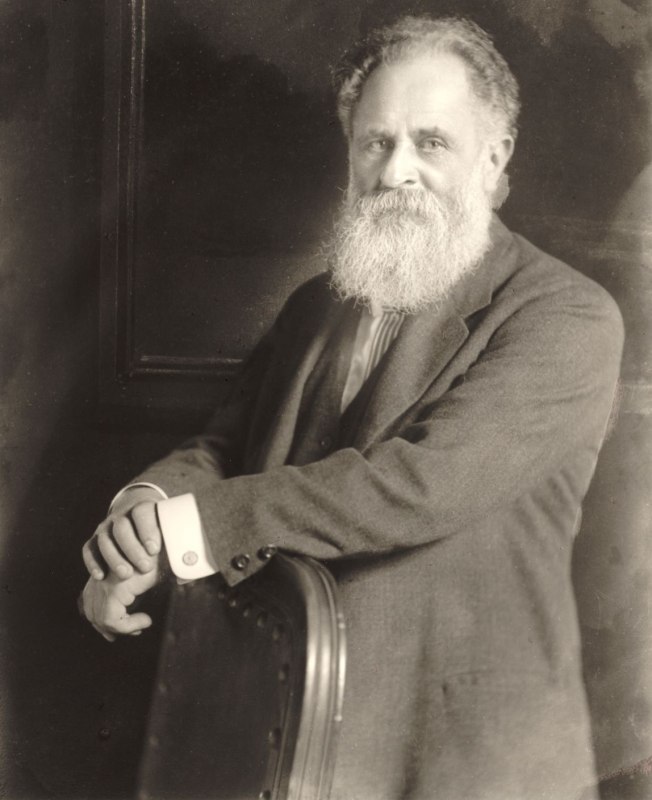Berthold Hatschek, Prof. Dr.
Honors
| Ehrung | Titel | Datierung | Fakultät | |
|---|---|---|---|---|
| Room Name | Berthold-Hatschek-Übungssaal 8 (UZA I) | 2011 | Faculty of Life Sciences |
|
| Monument | Gedenktafel am Grab von Berthold Hatschek | 2022 | Faculty of Life Sciences |
|
- Zoology
- Faculty of Philosophy
Hatschek attended secondary school in Linz and in 1872 began studying medicine and natural sciences at the Universities of Vienna, Leipzig and Munich. He obtained his doctorate in 1877 with the paper “Beiträge zur Entwicklungsgeschichte der Lepidopteren”. He then worked as a private scholar and habilitated as a private lecturer for zoology at the University of Vienna in July 1879.
Already in 1895 he received a professorship as the successor of Friedrich Stein at the German University in Prague, after making a name for himself with important embryological research. In morphological studies, he was able to develop basic laws of formation of lower and higher worms and moss animals as well as vertebrates. One year later, in 1896, he became the head of the 2nd zoological comparative-anatomical institute as successor of the retired Carl Claus. Hatschek could not continue in the vein of his previous important work in Vienna, since he suffered from depression that increasingly became worse. He published less and less research results, while his planned works, the “Lehrbuch der Zoologie” as well as an osteology, remained unfinished. Only occasionally news about the development of a new morphology of vertebrates was published, although he had already done significant work on it. After the First World War he withdrew completely and stopped publishing completely. He did, however, remain in his teaching position until the academic year 1924/25.
Because of his Jewish religion, the National Socialists removed him from office in April 1938. In 1941 his property was dispossessed and he was thrown out of his apartment, shortly after which he passed away at the age of 87.
Despite only publishing works for a short time due to his illness, Hatschek had a significant impact on zoology and most of all influenced comparative morphology, even though he only focused on a few objects. He chose particular animal shapes and with these explained the blueprint of whole groups of animals, for example using the lancelet (amphioxus) as a stand-in for the group of vertebrates. He is the namesake of a groove in the lancelets’ dorsal roof of the mouth called “Hatschek’s pit”. Furthermore, his trochophora-theory showed phylogenetic connections between animal groups that were far apart from each other. He also created the phylum of zygoneura, the genus of swamp gnats.
Among Hatschek’s most famous works are the “Lehrbuch der Zoologie” (1888) and “Das neue zoologische System” (no year).
In 1896 he became a corresponding member and in 1932 a full member of the Academy of Sciences. He held the title of Hofrat and belonged to the Leopoldina in Halle. He also was a member of the imperial-royal scientific exam commission for the teaching exam for secondary schools as well as a full member of the Gesellschaft zur Förderung deutscher Wissenschaft, Kunst und Literatur (Society for the Support of Science, Art and Literature) in Bohemia.
Archiv der Universität Wien, Philosophische Fakultät, Personalakt 1894. | Österreichisches Staatsarchiv/Allgemeines Verwaltungsarchiv, Bestand Unterricht, Personalakt Hatschek.
Zuletzt aktualisiert am 02/21/25

